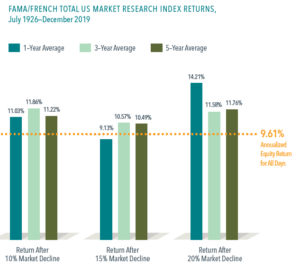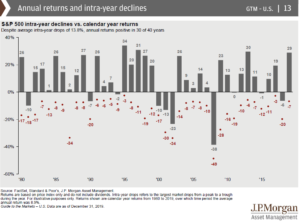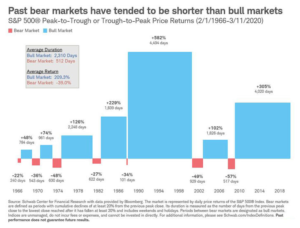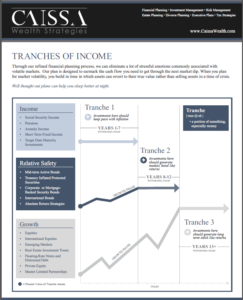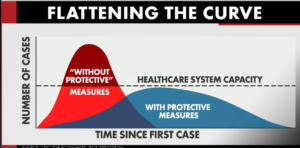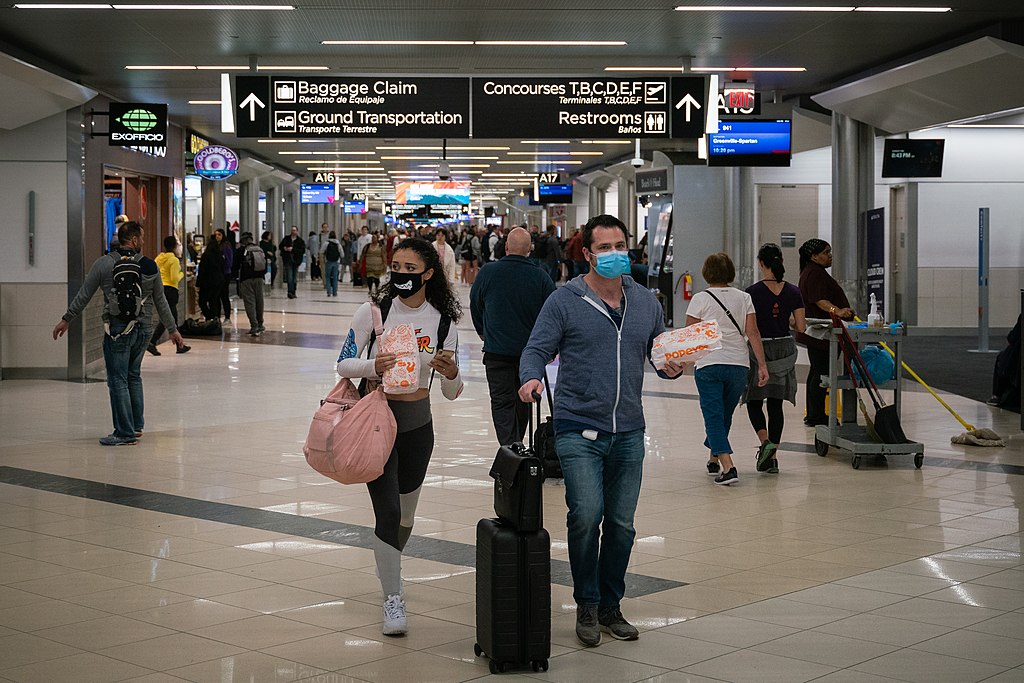
Coronavirus and the Stock Markets
Coronavirus and the Stock Markets
Executive Summary (details following):
- The Coronavirus has halted consumers as large events are being canceled, people are staying home from social functions and sick days are being used.
- The S&P 500 is off its high by 28%
- Federal Reserve has cut rates .50% and have just announced a $1 Trillion bond repo for T bills
- Federal Government is looking to cut payroll taxes until the end of the year among other stimulus.
- Federal Government has banned travel to/from Europe
- Xi visited the coronavirus epicenter Wuhan and gave it the all clear to go back to work
- US GDP is likely to suffer from the lack of consumer spending, potentially putting us into a recession
- It is too early to tell what the effects of the virus are and what the market should be priced at.
What to do now?: Caissa has always stressed the need to plan for bad markets while you are in a good market. This allows us to not have to react in a downturn and instead be proactive, put cash to work and buy during downturns. We recommend resisting the urge to sell which makes temporary losses permanent. Instead, be long term greedy. This does not mean complacently sitting on the sideline, but rather choosing to make all of these decisions in good market environments. Remember, on average, every year for the past 30+ years we have an intra-year decline of at least -13% (see these details in the full report). Bear markets are typically relatively short (details in the full report) and timing the sell and the buy perfectly is nearly impossible.
Tranches are WORKING!: If you are a client of CAISSA, you’ve likely heard of our Tranches of Income strategy. In this process, we separate your portfolio into short, mid and long term assets for allocation and performance tied to your personal financial plan. Year to date, the strategy has worked. Each one of our tranches are exceeding expectations with Tranche one having positive year to date returns (see the full report for the numbers)! The key is PLANNING ahead and knowing what to expect!
The Virus: Isn’t it just like the flu? We’ll explain why it’s a bit different in the detailed section. This is not a story about how each individual should fear a deathly virus and panic, it’s more about slowing the spread of the virus to reduce the strain on hospitals and longer term effects on our economy due to sick leave and consumers not spending because they are home sick. This is not taking the deaths from the virus lightly by any means but in comparison with other illnesses, most people effected are of elderly age as well as those with underlying health ailments. Slowing the spread can make it more manageable for healthcare and consumer activity – which is the foundation of 70% of the growth of the economy.
What’s Next?: There is an end to this, we just don’t know when yet. The good news is this is not a result of a systemic issue like in 2008 with the financial crisis. This is a black swan event that is having a quick and strong impact on our economy because it is taking the consumer out of the workforce and from spending money on our economy’s goods and services. The fundamentals of many companies will likely remain intact but with an intense slowdown for the foreseeable future. That anticipated slowdown of growth is what makes the values of stocks go down. Once we have more information, we will likely have a rebound and rebounds can happen very quickly.
Steps clients should take is to:
- Assess their thoughts/feelings surrounding this market and apply them to their current portfolio. Asset allocations should be massaged per any risk tolerance adjustment – after the market heals. Keep diversified and add hedging strategies. Proactive trading should be on the buy side.
- Understand the goals and strategies of the portfolio. Caissa wealth management prepares a summary of all our goals, objectives, tranches targets, allocation targets and more. That document is a very useful tool for clients to set expectations so they don’t have to feel intense anxiety during these times.
- Never invest more that you are willing to risk or that you will need in the next two years.
- Proactively put long term allocated cash to work
FULL REPORT
What to do now?: Caissa has always stressed the need to plan for bad markets while you are in a good market. This allows us to not have to react in a downturn and instead be proactive, put cash to work and buy during downturns. We recommend resisting the urge to sell which makes temporary losses permanent. Instead, be long term greedy. This does not mean complacently sitting on the sideline, but rather choosing to make all of these decisions in good market environments. Remember, on average, every year for the past 30+ years we have an intra-year decline of at least -13% (see these details in the full report below). Bear markets are typically relatively short (details in the full report) and timing the sell and the buy perfectly is nearly impossible. Whether the average investor realized it or not, three of the last five years the market was down double-digits intra year!
Consumer spending drives about 70% of the Gross Domestic Product (GDP- our measurement of growth) in the United States. The consumer has supported the lifeline of this bull market for a very long time now. Couple that with accommodative interest rates and nearly full employment, we had a good looking economy going into January. Even through February great economic reports and analytics were being reported.
That is all coming to a halt as people are staying home, utilizing sick & unpaid days and refraining from large gatherings. Without the consumer buying things at the mall, traveling, going to Disney World or going to a movie, the US economy is likely going to fall into a recession soon, if not already. Not because the corporate world isn’t working, but because people aren’t buying their goods right now.
THIS WILL END. We will get back to normal, it’s just a matter of how long. This 2020 market environment is not entirely a systemic issue (like the financial crisis of 2008) that is like a cancer killing the underpinnings of the economy in traumatic ways but more likely a cyclical (even ‘black swan’) event that will have an end date. Instead, a cyclical event will slow us down with the “unknown” being the extent of the slowdown for length of time and growth. Having allocations to hedges and bonds for the very reason of thwarting off the full effect of the stock market volatility is key to maneuvering through market volatility.
Remember, losses on paper are temporary until sold. Downturns result in rebounds which is why being IN the market is so critical. Every decision to sell requires a precise decision of when to buy back in or you will miss the most beneficial rebound days. If you look at the history of bear markets (markets down more than 20% from their highs) the number of days in that bear market are far fewer than the number of days on average in a bull market (markets with good growth). So while this market is reacting swiftly to the downside, there is likely a bottom to be met. It may be possible that an intra-term bottom around 30% down from the highs could be a likely floor. That doesn’t mean we stay there for 2020, that is just an intra-year downturn that is part of long term investing.
Tranches are WORKING!: If you are a client of CAISSA, you’ve likely heard of our Tranches of Income strategy. In this process, we separate your portfolio into short, mid and long term assets for allocation and performance tied to your personal financial plan. Year to date, the wealth management strategy has worked. Each one of our tranches are exceeding expectations with Tranche one having positive year to date returns (see the full report for the numbers)! The key is PLANNING ahead and knowing what to expect!
In markets like this, our expectation is Tranche 1 will barely react and will help stabilize your entire portfolio. Our Tranche 1 is returning a positive 1% year to date (YTD through 3/11)! We typically have abound 7 years of retiree’s cash flows here. (If you’d like to know “Why 7 years” this link is a great explanation).
Tranche 2 should react more but not to the full extent of the market. YTD through 3/11, Tranche 2 has absorbed less than half of the equity index losses at about down 7%.
Tranche 3 holds all of the equities and is expected to absorb most of the market movements, up and down. YTD through 3/11, Tranche 3 is about -15% vs equity market indexes down -15% to -21% for various equity indexes.
By planning ahead and setting expectations, we can avoid emotional reactions that get the retail investor in trouble by putting things in perspective and removing the emotions from the equation.
The Virus: Isn’t it just like the flu? This is not a story about how each individual should fear a deathly virus and panic, it’s more about slowing the spread of the virus to reduce the strain on hospitals and longer term effects on our economy due to sick leave and consumers not spending because they are home sick. If we can flatten the curve of the number of cases hitting during a short or long time frame, it would be beneficial to lengthen that time frame. This allows for our healthcare system to maintain their systems, tend to all of the sick and not exist beyond their own capacity. If we have a plethora of sick people hitting the healthcare system at once, our healthcare providers will not be able to handle it.
This is not taking the deaths from the virus lightly by any means but in comparison with other illnesses, this is most impactful on people of elderly age as well as those with underlying health ailments. Slowing the spread can make it more manageable for healthcare and consumer activity – which is the foundation of 70% of the growth of the economy.
Curbing the effects of the virus would be done through massive testing, good hygiene and staying home. South Korea has been incredibly impressive on how they get ahead of this virus by testing everyone. They tested, they responded and they are in better shape than any other country. Italy, has not done so well. It got out of hand and now they are having to take some very dramatic measures on travel and quarantine. China is the main source of the virus and has not been forthcoming of their actual numbers. This is troublesome because it keeps the US out of the loop not knowing the real count is of the number of people dying vs the number of people sick. Right now, we think the denominator of that ratio is being incredibly low which results in a falsely high death rate. The US death rate is much lower so far. The US needs to test, and we need to test as many people as possible. It’s the only way to get a handle on what the statistics look like, just like South Korea. We need these test results to know what we are dealing with.
At this point it’s less of a point of the tally of people who contract the virus, but it’s more about the fear of getting/spreading it. Fear has created a contagion effect where normalcy is out the window. People are not going to large gatherings (probably wise to slow the virus), they aren’t going shopping, attending sporting events and business travel to conferences are all but halted. This behavior will kill consumer spending. The key when you do go out is to wash your hands. This virus is said to be transferred very easily and washing hands is key to reducing transmission.
What’s Next?: There is an end to this, we just don’t know when yet. The good news is this is not a result of a systemic issue like in 2008 in the financial crisis where financial surprises kept coming out of the woodwork and causing precipitated downturns. This is more like a black swan event that is having a quick and strong impact on our economy because it is taking the consumer out of the workforce and from spending money on our economy’s goods and services. The fundamentals of many companies will likely remain intact but with an intense growth slowdown for the foreseeable future. That anticipated slowdown is what makes values of stocks go down. It will take some in-depth analysis to make sure balance sheets and forecasts are steady and reliable after this starts to blow over. Once we have more information on containment and slowdown of infection, we will likely have a rebound and rebounds can happen very quickly.
Unfortunately, it is too early to make predictions but we will have the data to do so soon, hopefully!
Caissa Wealth Strategies is a fee based registered investment advisory firm, specializing in personal, dynamic wealth management. Based in Bloomington, Minnesota, Caissa financial planning professionals provide individualized strategies for every client. You can expect more from CAISSA, and in turn, you will get a fiercely loyal advocate on your side. For more news and information on wealth management solutions, visit Caissa Wealth.
The information provided is based on information provided by you and is only an estimate based on that information. Caissa Wealth Strategies does not offer tax planning or legal services, but may provide references to accounting, tax services or legal providers. They may also work with your attorney or independent tax or legal advisor. A qualified tax professional or independent legal counsel should review the tax implications of any securities transaction. This material is not intended to replace the advice of a qualified attorney, tax advisor, financial advisor, or insurance agent. Before making any financial commitment regarding the issues discussed here, consult with the appropriate professional advisor.
